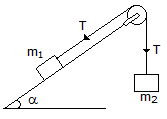Directions to Solve Some scholars were exploring the forest of Middle America. They discovered some buildings which were in ruins. These buildings were ...(1)... ruined by the encroaching forest. It was also clear that these buildings were no ordinary structures. They were remnants of a ...(2)... civilisation. The scholars got interested. They excavated more and discovered ...(3)... their utmost surprise the remains of flourishing civilization-the Maya's ...(4)... they named it. Thus it was as late in ...(5)... 19th that the secrets of new civilization were ...(6)... For sometime the scholars believed that the Mayan's must have ...(7)... the descendants of ancient Egyptians or one of the lost tribes of Israel; or perhaps a brand of the South East Asia's immigrants. However they could not come to an unanimous decision. Nonetheless the fact remains that even-to day the Mayan is one of ...(8)... most ancient cicilizations. This civilisation was situated in the ...(9)... of Middle America. It covered an area equivalent to France, ...(10)... spread across Guatemala, Belize and some part of Mexico Honduras. It started in 2500 B.C and continued its progress till 34 ...(11)... later. Throughout its period of progress, the people struggled against the invading ...(12)... They used to burn the plants and make the land ...(13)... for civilization. Their staple food was maize. but even while ...(14)... for existence, they found time to build remarkable buildings for ...(15)... they used mortar, sandstone and volcanic rock. The buildings do tell us about the technological advances they had attained. A being
B been
C become
Share : |
A
Disagree
B
Agree
Share : |
A
directly
B inversely
Share : |
A translatory
B
rotary
C
translatory as well as rotatry
D
circular
Share : |
A
m1.m2/m1+m2
B
m1/m2
C m1.g sin α
D  Share : |
A
change
B
does not change
Share : |
A
maximum, if it acts at the centre of gravity of the body
B
minimum, if it acts at the centre of gravity of the body
C
different at different points on its line of action
D
same at every point on its line of action
Share : |
A 5
B 40
C 20
D 10
Share : |
A
Yes
B
No
Share : |
A does not give
B
gives
Share : |





